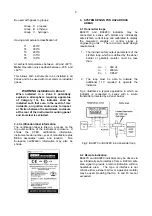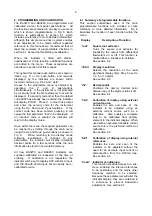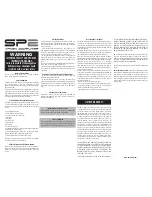
2
1.
Description
2.
Operation
2.1
Controls
3.
Intrinsic safety certification
3.1
ATEX certificate
3.2
4/20mA input
3.3
Zones, gas groups & T rating
3.4
Certification label information
4.
System Design for Hazardous
Areas
4.1
Transmitter loops
4.2
Remote indication
5.
Installation
5.1
Location
5.2
Installation procedure
5.3
EMC
6.
Programming and Calibration
6.1
Summary of programmable
functions.
6.2
Root extractor
6.3
Resolution
6.4
Position of decimal point
6.5
Calibration using an external
current source.
6.6
Calibration using internal
references.
6.7
Conditioning sub-menu
6.7.1 AC rejection
6.7.2 Calibration of internal
references.
6.8
Function of the P push-button
6.9
Security code
6.10 Over and under-range
7.
Calibration Example
7.1
Using an external calibrator
7.2
Using the internal calibrator
8. Maintenance
8.1
Fault finding during commissioning
8.2
Fault finding after commissioning
8.3
Servicing
8.4
Routine maintenance
8.5
Guarantee
8.6
Customer comments
9. Accessories
9.1
Scale card
9.2
Tag strip
9.3
Alarms
9.3.1 Solid state output
9.3.2 Intrinsic safety
9.3.3 Programming and
adjustment.
9.3.4 Alarm enable
9.3.5 Setpoint adjustment
9.3.6 Alarm function
9.3.7 Alarm output status
9.3.8 Hysteresis
9.3.9 Alarm delay
9.3.10 Alarm silence time
9.3.11 Access setpoint
9.3.12 Adjusting alarm setpoints
from display mode.
9.4
Lineariser
9.4.1 Calibration using an external
source.
9.4.2 Calibration using internal
reference.
9.5
Tare function
9.6
Display backlight
9.6.1 Separately powered backlight
9.6.2 Loop powered backlight
Appendix 1
FM & cFM Approval for Installation in
USA and Canada.
Appendix 2
IECEx Certification
The BA327C & BA328C are CE marked to show compliance with the European Explosive
Atmospheres Directive 94/9/EC and the European EMC Directive 2004/108/EC
CONTENTS



































